Global Temperature — More Figures
<> <> <> <> <> <> <> <>
Summary Figures
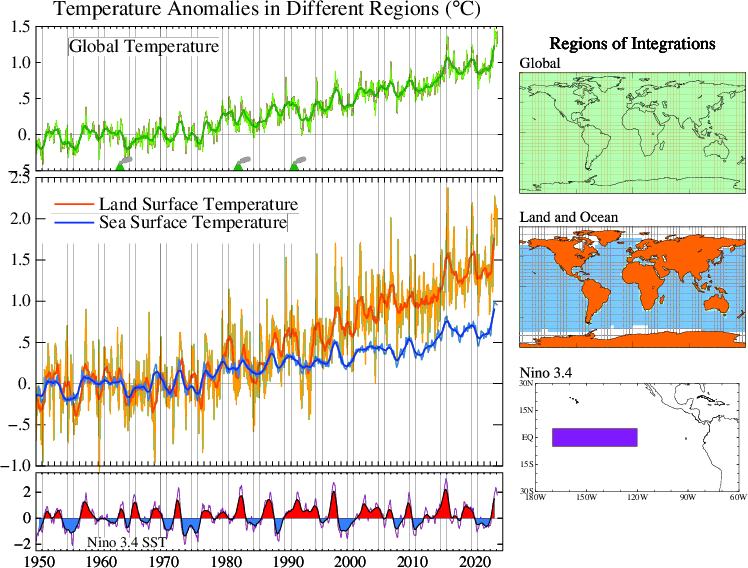
Monthly (thin lines) and 12-month running mean (thick lines or filled colors in case of Nino 3.4 Index) global land-ocean temperature anomaly, global land and sea surface temperature, and El Nino index. All have a base period 1951-1980. Figure also available in PDF. The monthly mean temperature anomaly data are available over land (data) and over ocean (data). (Data through February 2024. last updated 2024/03/11, now with GHCN v4 and ERSST v5.)
For Nino 3.4 SST see El Nino/La Nina page (last modified 2024/03/05) for data source and more information.
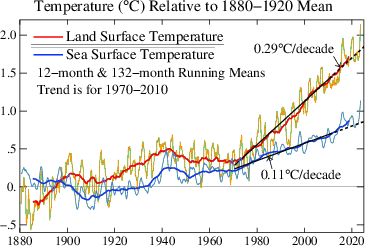
Land+Ocean with 1880-1920 base period. (2024/03/11)
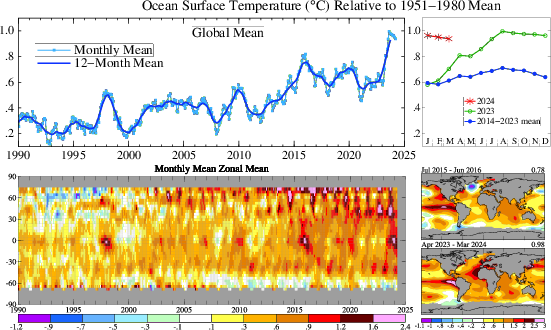
<> <> <> <> <> <> <>
Monthly Analysis
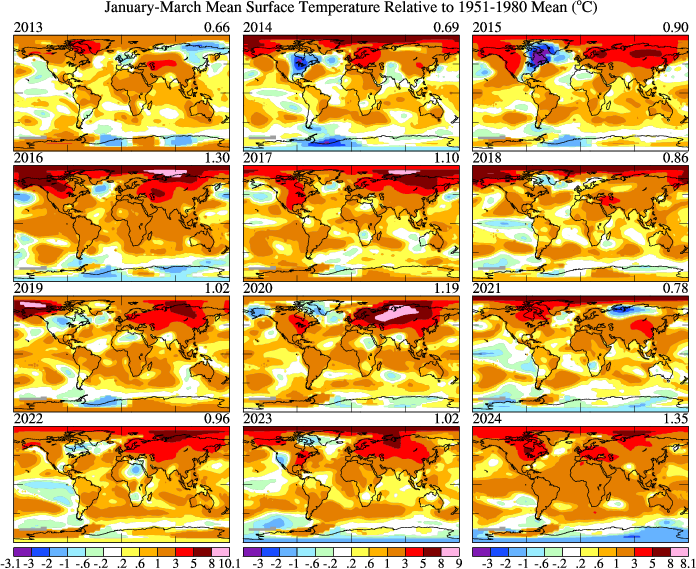
Comparison of temperature of the last eleven years. (Updated on 2024/04/10, now with GHCN v4 and ERSST v5)
- - - - - - -

Global-mean monthly-mean surface temperature anomalies with the base period 1951-1980. V denotes the major volcanic eruptions, and m and M denote the years of the minima and maxima of sunspot number cycles, respectively. See a NOAA/NGDC page. Figure also available in PDF. (Updated on 2024/04/10 , now with GHCN v4 and ERSST v5.)
<> <> <> <> <> <> <>
Changes in Seasonal Resolution
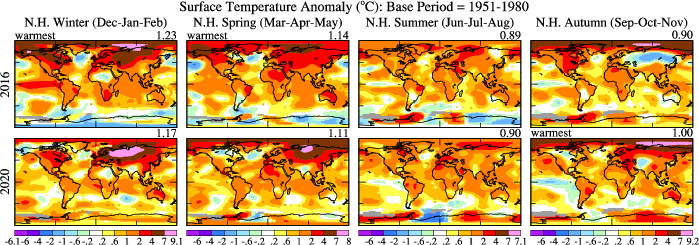
Seasonal mean surface temperature anomaly for 2016 and 2020. (Updated on 2021/03/12, now with GHCN v4 and ERSST v5)
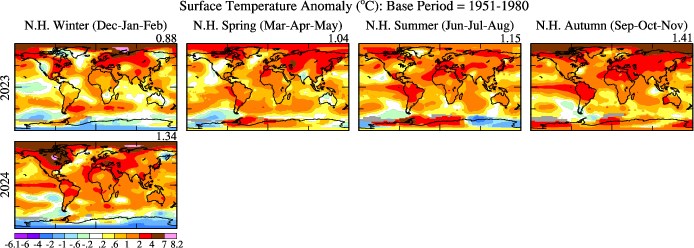
Seasonal mean surface temperature anomaly for 2023 and 2024. (Updated on 2024/03/11, now with GHCN v4 and ERSST v5)
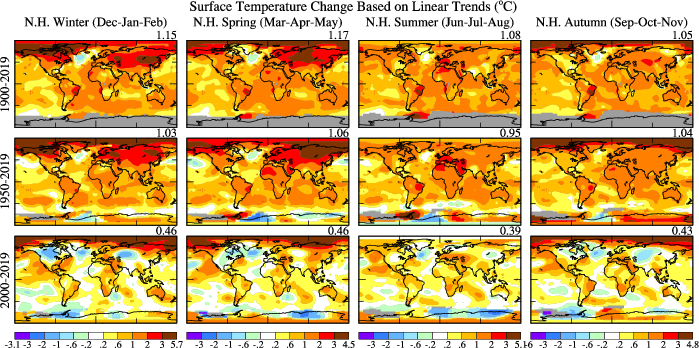
Surface temperature changes for 1900-2019, 1950-2019 and 2000-2019 based on linear trends for four seasons separately. (Updated on 2020/01/14, now with GHCN v4 and ERSST v5)
<> <> <> <> <> <> <>
Annual Analysis
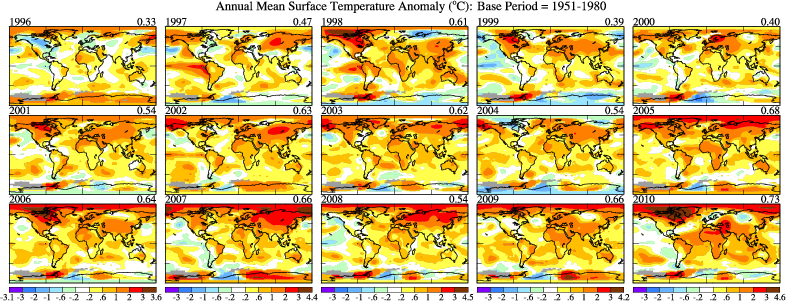
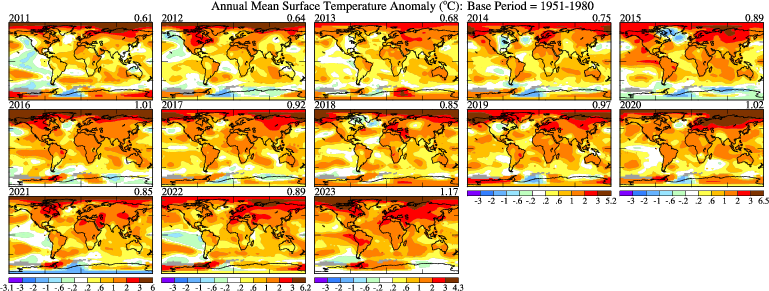
Annual mean surface temperature anomaly since 1996. Since 1880 (140 years) the top 5 warmest years fall in 2015-2022 and top 10 warmest years fall in 2010-2022. Now with GHCN v4 and ERSST v5. Updated on 2023/12/14)

Annual mean surface temperature changes based on linear trends. Figure also available in PDF (Updated on 2024/01/12 with GHCN v4 and ERSST v5)
<> <> <> <> <> <> <>
Decadal Anomalies
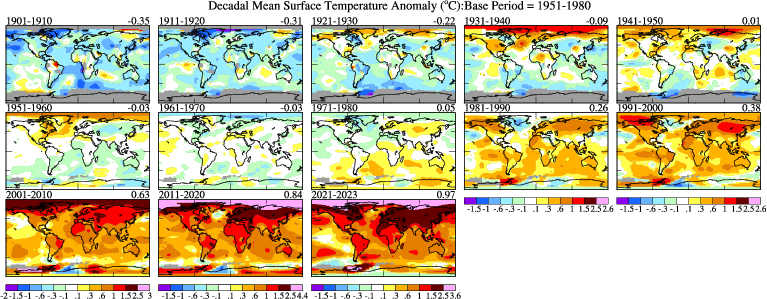
Figure also available in PDF.
(Updated on 2024/01/12, with GHCN v4 and ERSST v5)
Annual and decadal mean global-mean temperature relative to 1880-1920 mean
<> <> <> <> <> <> <>
Regional Changes
Zonal Means
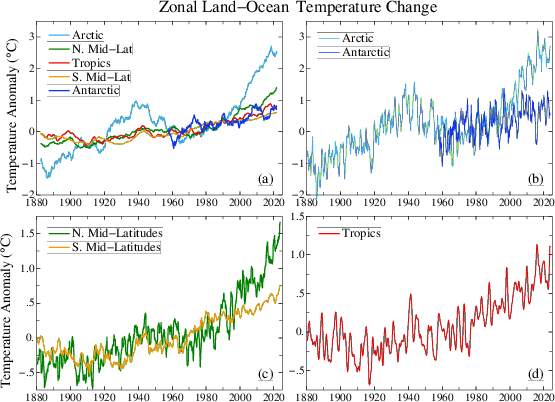
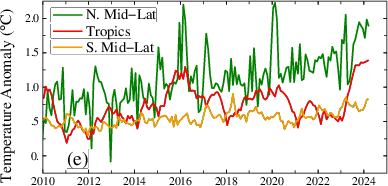
Figures in PDF: (a)-(d) and (e). (Data through March 2024 used. Updated on 2024/04/10 now with GHCN v4 & ERSST v5)
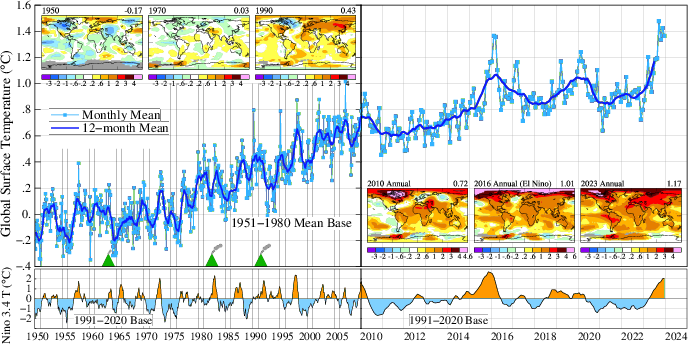
(Data through December 2023. Updated pn 2024/01/12).
<> <> <> <> <> <> <>
Updates of figures in Hansen, et al. Global temperature change, 2006, PNAS.
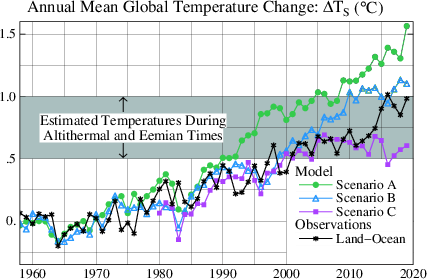
Extended to 2062 Data from Dr. Gavin Schmidt (Updated 2021/01/22)
.

Figure 7 in PDF. (Updated 2020/11/24)
Figure 9 in PDF. Data provided by Dr. Reto Ruedy of NASA/GISS. (Updated 2020/11/30)
.
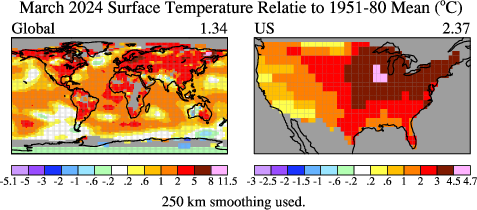
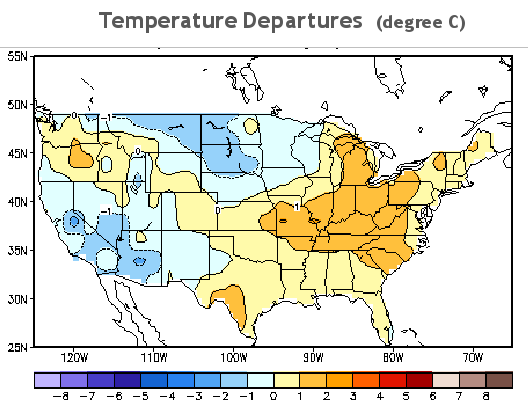
<> <> <> <> <> <> <>
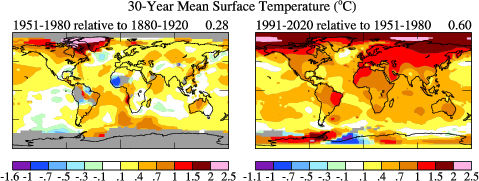
<> <> <> <> <> <> <>
Daily Global Temperature Anomaly by Japanese 55-year Reanalysis
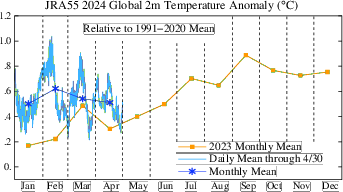
<> <> <> <> <> <>
Today's Weather Maps by Climate Reanalyzer (University of Maine)
-----------------------------------------------------------------------------
All above data source: NASA Goddard Institute for Space Studies, New York, NY,
except several NOAA data sets mentioned above.
(See
data.giss.nasa.gov/gistemp for details and data.)
Note: The Byrd Station data in central West Antarctica were replaced by Bromwich et al's data. (since 2013/03/21)
-----------------------------------------------------------------------------
* * * Snow * * *